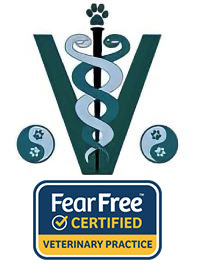Library
-
Rabbits can make wonderful pets for those willing to understand their unique characteristics and needs. They are very intelligent and always adorable, but require special handling and more supervision than some other pet species. As it is with all pets, though, rabbits require a healthy diet, lots of activity, social interaction, and routine veterinary care to live happy and healthy lives.
-
Fly strike is basically a condition where flies are attracted to the fur or exposed skin on a rabbit, whereby they lay eggs that hatch into maggots that subsequently cause extensive skin and deep tissue damage. The attraction to flies comes from urine or fecal soiled hair or skin that has been damaged by fight wounds, fleas or skin mites. Treatment requires veterinary attention and potential hospitalization. Prevention is attained by keeping your rabbit INDOORS and clean.
-
Rabies is a viral disease that can infect all warm-blooded animals, including cats and people, although some species are somewhat naturally resistant to the disease. When signs of rabies occur, it is an almost invariably fatal disease. Vaccination and post-exposure quarantine are discussed.
-
Rabies is one of the most devastating viral diseases affecting mammals, including dogs and humans. It is a fatal disease caused by infection with the rabies virus. Following a bite from a rabid animal, the disease progresses in stages. Vaccination is the cornerstone of rabies prevention.
-
Radiation is a type of energy produced naturally by the sun, earth, and rocks and artificially by machines. Although several types of tumors can be treated with radiation therapy alone (e.g., nasal tumors, brain tumors, and certain types of lymphoma), radiation therapy is most commonly used to destroy or limit the growth of cancer cells left behind (i.e., microscopic disease) after a tumor has been surgically removed. Side effects depend on the type and location of the tumor and its surrounding tissues.
-
X-ray images are produced by directing X-rays through a part of the body towards an absorptive surface such as an X-ray film or electronic sensor. The image is produced by the differing energy absorption of various parts of the body. Bones are the most absorptive and leave a white image on the screen, whereas soft tissue absorbs varying degrees of energy depending on the density, producing shades of gray on the image. Air on an X-ray is black. X-rays are a common diagnostic tool used for many purposes.
-
X-ray images are produced by directing X-rays through a part of the body towards an absorptive surface such as an X-ray film or electronic sensor. The image is produced by the differing energy absorption of various parts of the body. Bones are the most absorptive and leave a white image on the screen, whereas soft tissue absorbs varying degrees of energy depending on the density, producing shades of gray on the image. Air on an X-ray is black. X-rays are a common diagnostic tool used for many purposes.
-
Most cats care for their kittens with little need for human intervention; if they do not, then their caregivers need to step in. It is critical to maintain a warm environment and ensure they receive enough milk. Kittens’ weight should be checked daily in the first two weeks and any prolonged crying should be investigated. Feeding can be supplemented with commercial milk replacer if needed. Further feeding and vaccination recommendations are discussed. Contact your veterinarian for specific instructions.
-
Most dogs care for their puppies with little need for human intervention; if they do not, then their caregivers need to step in. It is critical to maintain a warm environment and ensure they receive enough milk. Puppies’ weight should be checked daily in the first two weeks, and any prolonged crying should be investigated. Feeding can be supplemented with commercial milk replacer if needed. Further feeding and vaccination recommendations are discussed. Contact your veterinarian for specific recommendations.
-
Ranitidine is given by mouth or injection and is used off-label to treat ulcers and erosions in the stomach and upper small intestine, reflux, or gastrointestinal motility issues. Give as directed. Side effects are uncommon but may include stomach upset. Do not use in pets with a history of allergies to this class of drugs. If a negative reaction occurs, call your veterinarian.


